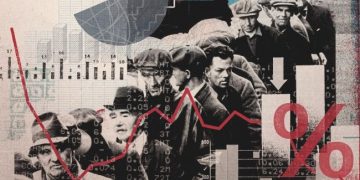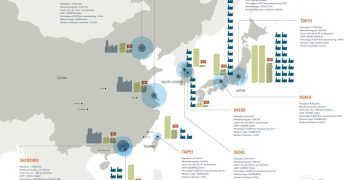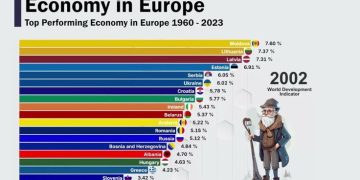The economic landscapes of Europe and the United States, while deeply interconnected, have exhibited growing structural divergences in recent years—particularly in terms of inflation dynamics, labor market characteristics, and policy responses. These differences not only reflect distinct historical, social, and institutional frameworks but also have profound implications for global investors seeking to optimize asset allocation amid evolving macroeconomic conditions. Understanding how these divergences influence inflation paths, employment patterns, and growth prospects is crucial for anticipating risks and opportunities in an increasingly complex global economy.
Divergent Inflation Trajectories: The Starting Point of Economic Differences
Inflation behavior is one of the most visible markers of the economic divergence between the U.S. and Europe:
- United States: The U.S. has experienced more persistent inflationary pressures in recent years, driven by robust consumer demand, fiscal stimulus measures, and supply chain bottlenecks. Wage growth, rising commodity prices, and strong housing market dynamics have further contributed to price pressures. The Federal Reserve has responded with aggressive monetary tightening to anchor inflation expectations.
- Europe: In contrast, the eurozone’s inflation trajectory has been more uneven. Energy price shocks and supply disruptions have created spikes in headline inflation, but underlying core inflation remains relatively subdued compared to the U.S. The European Central Bank (ECB) has faced challenges balancing inflation control with fragile economic growth and diverse national conditions across member states.
These contrasting inflation paths reflect underlying structural factors such as differing consumption patterns, fiscal policies, and energy dependencies, influencing monetary policy approaches and market expectations.
Labor Market Structures: Flexibility vs. Rigidity
Labor market dynamics represent another key axis of divergence:
- U.S. Labor Market: The American labor market is generally characterized by higher flexibility, lower unionization rates, and dynamic wage-setting mechanisms. Unemployment rates have fallen to historic lows, and labor participation has rebounded strongly post-pandemic. This flexibility allows for faster adjustments in employment and wages but also contributes to wage-driven inflationary pressures.
- European Labor Market: European labor markets tend to be more regulated, with stronger worker protections, collective bargaining frameworks, and social safety nets. While this provides stability and social cohesion, it can also result in slower employment adjustments and structural unemployment in certain regions. Labor market participation and wage growth have been more muted, which helps contain inflation but may limit growth potential.
These structural differences affect not only domestic economic performance but also competitiveness and investment attractiveness.
Policy Responses and Their Impact on Global Capital Flows
Diverging inflation and labor market conditions have led to different monetary and fiscal policy stances:
- Monetary Policy: The Federal Reserve’s faster and more aggressive interest rate hikes contrast with the ECB’s more cautious and gradual tightening. This divergence affects capital flows as higher U.S. yields attract investment, strengthening the dollar, while European rates lag behind.
- Fiscal Policy: The U.S. has pursued expansive fiscal measures to support growth and labor markets, whereas Europe’s approach remains more conservative, focusing on targeted support amid concerns over debt sustainability and political fragmentation.
The resulting interest rate differentials and economic outlooks influence investor preferences, prompting portfolio reallocations between U.S. and European assets.

Implications for Global Asset Allocation
The structural economic divergences between Europe and the U.S. translate into tangible effects on global investment strategies:
- Currency Exposure: A stronger U.S. dollar, driven by robust economic fundamentals and monetary tightening, affects returns on international investments and necessitates active currency risk management.
- Equity Markets: U.S. equities may benefit from higher growth prospects and corporate earnings resilience, while European stocks could face headwinds from slower growth and policy uncertainty. Sectoral differences also emerge, with Europe’s industrial and export-oriented companies sensitive to global demand fluctuations.
- Fixed Income: U.S. bonds offer higher yields but come with inflation and rate hike risks; European bonds may provide lower yields but greater stability. Investors must balance yield, duration, and credit risk accordingly.
- Alternative Assets and Emerging Markets: Divergences influence capital flows into commodities, real estate, and emerging markets, as investors seek diversification and hedges against regional risks.
Long-Term Considerations: Structural Reforms and Integration
Looking ahead, the degree to which Europe undertakes structural reforms in labor markets, fiscal policy coordination, and digital and green transitions will impact its convergence with U.S. economic performance. Conversely, the U.S. faces challenges related to income inequality, labor participation, and fiscal deficits that could temper growth sustainability.
Global investors must monitor these evolving dynamics to recalibrate portfolio allocations in response to shifting risks and opportunities.
Conclusion
The growing structural differences between the European and U.S. economies—manifested in distinct inflation paths, labor market frameworks, and policy responses—are reshaping the global investment landscape. These divergences influence capital flows, asset valuations, and risk assessments, compelling investors to adopt nuanced, region-specific strategies. As the global economy navigates an era marked by uncertainty and transformation, a deep understanding of these economic contrasts will be essential for optimizing global asset allocation and achieving long-term portfolio resilience.





































